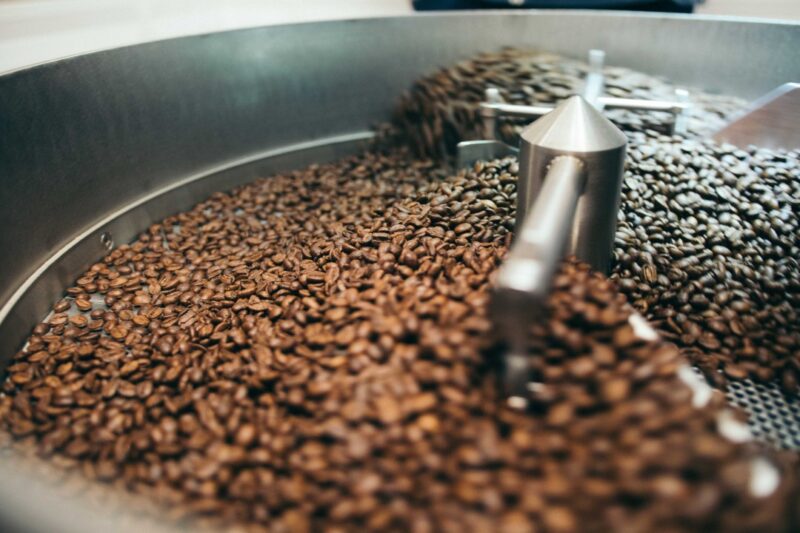Coffee blending is an art form, a delightful journey through aroma, taste, and cultural heritage. It’s about combining different coffee beans to create a unique flavor profile, much like a painter mixes colors to create a new hue. This comprehensive guide will lead you through the intricacies of coffee blending, helping you to craft your very own signature brew.
Understanding Coffee Beans

Before diving into blending, it’s crucial to understand the basic types of coffee beans. Primarily, there are two species of coffee beans: Arabica and Robusta. Arabica beans are known for their sweet, soft taste and higher acidity, often possessing fruity and floral notes. On the other hand, Robusta beans are stronger, harsher, and more bitter, with a grain-like overtone and peanutty aftertaste. The geography of the bean – its origin, altitude, and climate – also significantly impacts its flavor profile. If you need help when it comes to picking the best coffee bean for your taste and tailoring the blend for you, check out how professionals at Lux Cafe Club can help you achieve just that, without a sweat.
The Basics of Coffee Blending
Why blend coffee? Blending allows you to balance flavors, create complexity, and maintain consistency. It’s about harmonizing different beans to enhance their strengths and minimize their weaknesses. The goal is to produce a coffee that is greater than the sum of its parts.
Selecting Beans for Your Blend
The selection of beans is a crucial step. Consider starting with a base bean that represents the dominant flavor you’re aiming for. This could be a smooth, chocolatey Brazilian bean or a bright, acidic Ethiopian variety. To this, you can add complementary beans that bring in the desired complexity, such as a hint of spice or a touch of sweetness.
Understanding Roast Profiles

Roasting plays a pivotal role in flavor development. Beans can be light, medium, or dark roasted, each imparting different characteristics. Light roasts retain more of the bean’s original flavor, often resulting in a more acidic brew. Medium roasts offer a balance of acidity and body, while dark roasts are less acidic and have a fuller body. Blending beans with different roast profiles can yield a fascinating depth of flavor.
Experimenting with Ratios
Finding the right ratio of beans in your blend is a process of experimentation. A common starting point is a 50/50 split, but you might find that a 70/30 ratio better highlights the characteristics you’re after. Small adjustments can make significant differences in the final cup.
The Importance of Freshness
Freshness is key to a good coffee blend. Coffee beans start to lose their flavor shortly after roasting. Therefore, blending freshly roasted beans is essential to achieving the best flavor profile. It’s advisable to use beans that have been roasted within the past two weeks.
Balancing Flavors

Balancing flavors is the heart of blending. You’re looking to create a harmonious flavor profile where no single bean or characteristic overpowers the others. This balance is subjective and depends on your taste preferences. Do you prefer a bright, acidic coffee, or a rich, full-bodied cup? Your blend should reflect these preferences.
Trial and Error: The Path to Perfection
Creating the perfect blend often requires a bit of trial and error. Document your blending process – the beans, ratios, and roast profiles used. This documentation will be invaluable as you tweak your blend over time. Remember, even small changes can have a big impact on the overall flavor.
Crafting for Different Brewing Methods
Different brewing methods can highlight different aspects of your coffee blend. A French press, for instance, is great for full-bodied, darker roasts, while a pour-over might better suit a lighter, more acidic blend. Consider how the brewing method will interact with your blend when crafting it.
Exploring World Coffee Cultures in Blending

Delving into the world of coffee blending isn’t just about mixing beans; it’s a cultural exploration. Different regions of the world offer beans with unique characteristics influenced by their local climate, soil, and processing methods. For example, African coffees, like those from Ethiopia and Kenya, are often known for their floral and fruity notes, whereas Latin American coffies, such as those from Colombia and Brazil, tend to have a sweeter, nuttier profile.
The Role of Processing Methods in Flavor
The way coffee beans are processed before they are roasted plays a significant role in the final flavor of the coffee. There are several methods of processing beans, including washed, natural, and honey-processed, each imparting different flavors and qualities. Washed beans tend to have a cleaner, more acidic taste, while natural or dry-processed beans exhibit sweeter, fruitier flavors. Honey processing, a method in which some of the fruit mucilage is left on the bean during drying, can result in a sweet, complex profile.
Sustainable Blending: Considering the Environment and Communities
In the world of coffee blending, sustainability is becoming increasingly important. This encompasses environmental considerations, such as how coffee is grown and processed, and social aspects, including fair compensation and working conditions for coffee growers. Choosing beans from sustainable sources not only supports these vital elements but can also influence the taste of the coffee. Beans grown in sustainable environments often have a richer, more robust flavor, a reflection of the care taken in their cultivation.
Sharing and Feedback
Lastly, share your creation. Feedback from friends, family, or fellow coffee enthusiasts can provide new perspectives and ideas. They might notice subtleties that you’ve missed or suggest combinations you haven’t considered.
End Note
Crafting your signature coffee blend is a journey of discovery. It’s about exploring the vast world of coffee beans and understanding how their flavors interact. It requires patience, experimentation, and a passion for coffee. But the reward – a cup of coffee that is uniquely yours – is well worth the effort. So, embark on this flavorful adventure and discover the unique blend that speaks to your palate.
Related Posts:
- How to Care for a Horse's Hooves ─ Essential Tips…
- What Must an Entrepreneur Do After Creating a…
- Tips for Maximizing Compensation in Your Long-Term…
- Revolutionizing Your Digital Space: 10 Tips for…
- How Often Should You Do Yoga? Tips for Finding Your…
- How to Sell Your Car Safely: 9 Tips and Advice for a…














